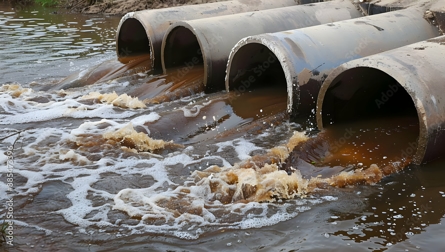When water damage occurs in your Baltimore property, understanding its classification becomes crucial for proper restoration. Not all water damage is the same, and the source and nature of the water significantly influence the restoration approach needed. In our region, where properties range from historic row houses in Fells Point to modern condos in Harbor East, recognizing these differences helps ensure appropriate response and restoration.
Why Water Damage Categories Matter for Baltimore Properties
The classification of water damage directly impacts restoration methods, safety protocols, and insurance considerations. Baltimore's diverse architecture and weather patterns create unique challenges for water damage restoration. From coastal flooding near the Inner Harbor to burst pipes in Mount Vernon's historic buildings, each scenario requires specific approaches based on the water damage category.
Understanding these categories becomes particularly important given Baltimore's aging infrastructure and seasonal weather challenges. Our city's position near the Chesapeake Bay and vulnerability to both coastal storms and urban flooding makes water damage a frequent concern for property owners throughout the region.
Category 1 Water Damage: Clean Water Sources
Category 1 water damage, often called "clean water," originates from sanitary water sources. In Baltimore homes, this typically comes from broken water supply lines, overflowing sinks with clean water, or malfunctioning appliances using clean water. This category poses the lowest risk to human health but still requires prompt attention to prevent escalation. Despite being the least hazardous, Category 1 water damage can quickly deteriorate if not addressed promptly. Baltimore's humidity levels, particularly during summer months, can accelerate this deterioration. What starts as clean water damage can become more severe within 24-48 hours as the water picks up contaminants from building materials and the environment. Common sources of Category 1 water damage in Baltimore properties include:
Supply Line Breaks: Common in older homes throughout Roland Park and Guilford
Appliance Overflows: Frequently seen in modern apartments and condos
Tub or Sink Overflows: Often occur in both historic and contemporary properties
Broken Water Heaters: Particularly common in Baltimore's aging housing stock
Category 2 Water Damage: Grey Water Contamination
Category 2 water damage, known as "grey water," contains significant contamination that could cause discomfort or illness if ingested. In Baltimore's diverse property landscape, this type of damage frequently occurs in both residential and commercial settings, requiring more careful handling than Category 1 incidents. Our city's older buildings, particularly in historic districts like Federal Hill and Bolton Hill, face unique challenges with Category 2 water damage. The porous materials common in historic construction can absorb contaminated water more readily, making quick response crucial for preventing further deterioration. Common sources of Category 2 water damage include:
Washing Machine Overflow: Contains detergents and soil from clothes
Dishwasher Discharge: Carries food particles and cleaning chemicals
Sump Pump Failures: Often contain groundwater contamination
Toilet Overflow (without feces): Requires careful handling despite lack of solid waste
Category 3 Water Damage: Black Water Hazards
Category 3 water damage, or "black water," represents the most severe classification, containing hazardous contaminants that pose serious health risks. In Baltimore, where aging sewage infrastructure and flood risks coincide, Category 3 incidents require immediate professional intervention. This type of damage becomes particularly concerning in low-lying areas near the harbor or in neighborhoods with combined sewer systems. During heavy rains or coastal flooding events, Baltimore properties can face increased risk of Category 3 water damage from multiple sources. Category 3 water damage commonly originates from:
Sewage Backups: Frequent in Baltimore's older neighborhoods
Storm Surge: Affecting properties near the harbor and waterways
Ground Surface Water: Common during urban flooding events
Standing water: Refers to degraded Category 1 or Category 2 water that has become heavily contaminated.
How Water Damage Categories Can Change
In Baltimore's climate, water damage categories aren't always static. Clean water can deteriorate to Category 2 or 3 based on several factors unique to our region. Understanding this progression helps property owners recognize the urgency of immediate response. Critical factors affecting water damage escalation include:
Time Elapsed: Water sitting for over 48 hours typically escalates the category.
Environmental Conditions: Baltimore's humidity accelerates contamination
Contact with Building Materials: Older buildings may contain hazardous materials.
Temperature: Our seasonal variations affect bacterial growth rates.
Why Choose ServiceMaster by Singer for Water Damage Restoration?
ServiceMaster by Singer brings extensive experience in handling all categories of water damage throughout Baltimore. Our team understands local building characteristics, common water damage patterns, and the specific challenges posed by our regional climate and architecture. Don't let water damage compromise your property's integrity or your health. Contact ServiceMaster at Singer immediately for professional assessment and restoration services. Our experienced team can properly categorize your water damage and implement appropriate restoration protocols for your specific situation.


